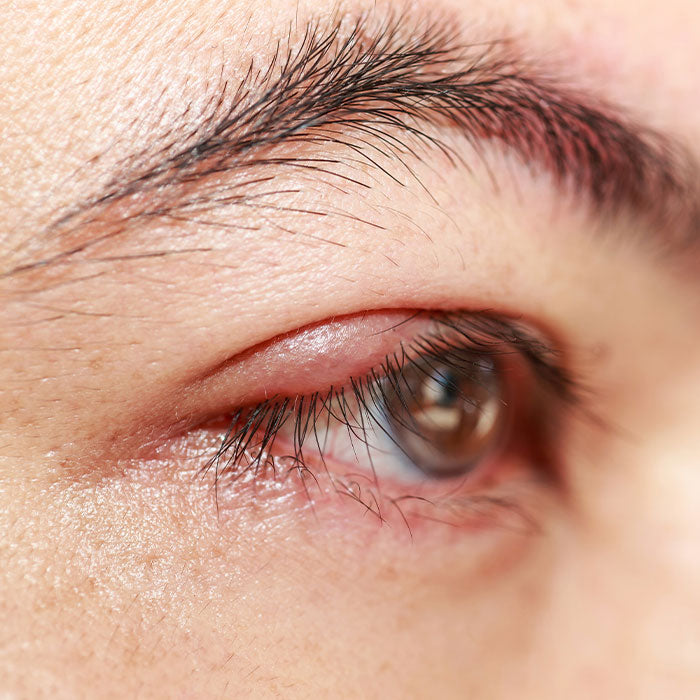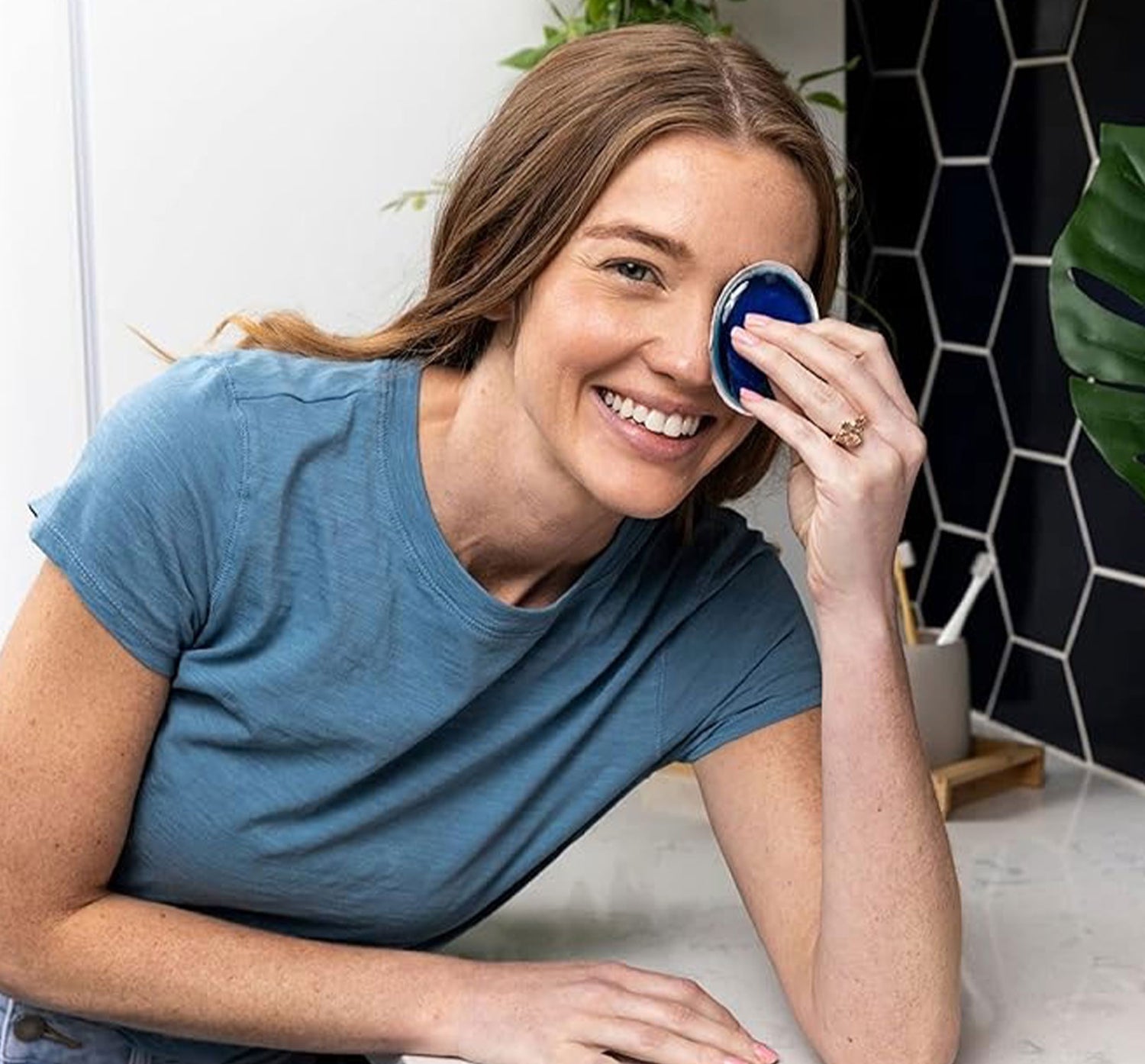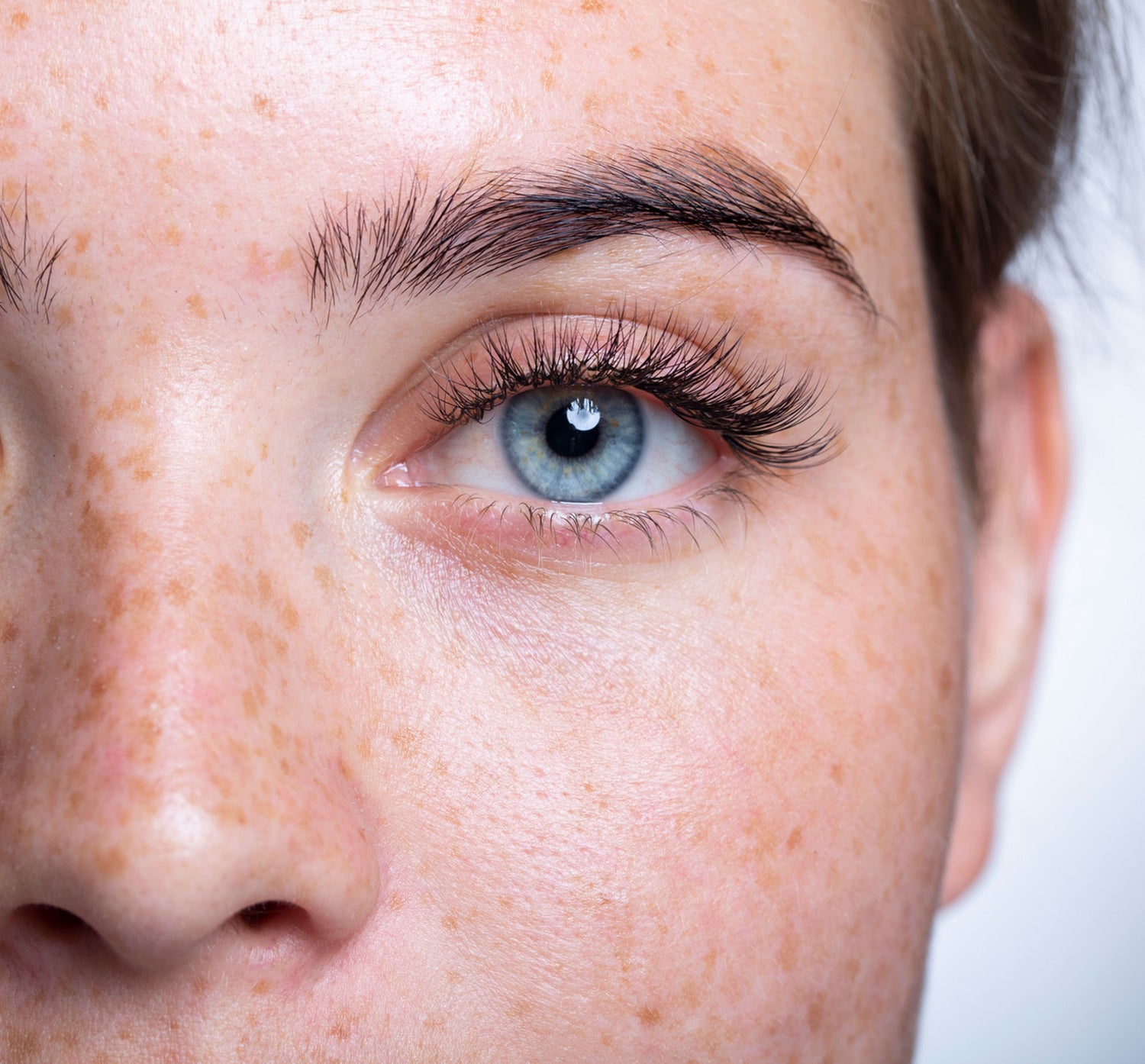Blepharitis is one of the most commonreasons for irritated, inflamed eyelids, yet many people don’t even realizethey have it. Despite how widespread it is, this chronic condition often getsoverlooked or mistaken for allergies, dry eye, or general eye fatigue. Withoutthe right care, symptoms like redness, itching, and flaking could stick aroundor get worse with time. While keeping the eyelids clean each day is one of themost effective ways to manage flare-ups, Eye-Press® also offers targeted heattherapy that makes daily relief for blepharitis more accessible and easier foryou to maintain right at home.
Blepharitis is a common condition thatcauses inflammation along the edges of the eyelids, often leading to symptomslike redness, irritation, flaking, and a gritty sensation in the eyes. Althoughit isn’t contagious, it is stubborn and uncomfortable, with symptoms that tendto come and go. Many people live with blepharitis for years without a cleardiagnosis, as it's easily confused with other eye conditions.
It can affect people at any age but ismost often seen in adults. Because it’s a chronic issue, consistent daily careis usually needed to help manage discomfort and reduce the frequency offlare-ups.

Types of Blepharitis
There are two main types of blepharitis, each of which affects a different part of the eyelid. Anterior blepharitis occurs along the outer front edge, where the eyelashes grow. It’s often linked to bacterial buildup or skin conditions like dandruff that irritate the eyelid margin. Posterior blepharitis affects the inner edge of the eyelid, which is the part that rests against the eye. This type is commonly associated with Meibomian Gland Dysfunction.
This condition interferes with the production of healthy oils that keep the eyes lubricated and comfortable. Symptoms vary depending on the type, but many people experience a combination of both. When that happens, managing discomfort becomes more challenging and often requires a consistent daily routine that’s focused on both hygiene and heat-based relief.

Causes & Risk Factors
Blepharitis often develops from a combination of factors, many of which are easy to overlook in daily life. Bacterial overgrowth, especially from Staphylococcus, is a common cause and tends to irritate the eyelid margins over time. When the Meibomian glands stop working properly, the protective oil layer of the tears becomes disrupted and causes inflammation and dryness. Skin conditions like rosacea and seborrheic dermatitis, along with seasonal or environmental allergies, often make symptoms worse. Inconsistent eyelid hygiene allows oil, debris, and dead skin to build up along the lash line and creates a cycle of irritation.
Eye makeup, particularly when not fully removed, adds another layer of buildup that interferes with eye health. Wearing contact lenses for extended periods increases exposure to irritants and reduces natural tear flow. Smoke, wind, pollution, and other environmental triggers can exacerbate symptoms, and make it harder to keep eyelids calm without a steady care routine.
Also Read: Blepharitis and Stye Treatment: Top Remedies for Relief
Common Symptoms of Blepharitis
Blepharitis symptoms tend to build gradually, sometimes going unnoticed until they really start to interfere with daily comfort. While the intensity may vary, the discomfort is usually persistent and tends to flare up in cycles. These are some of the most common symptoms to keep an eye on.
-
Red, swollen eyelids
Inflammation often makesthe eyelids appear puffy or irritated, especially around the lash line. This isone of the most noticeable signs of blepharitis and is often accompanied bygeneral discomfort.
-
Crusty debris along the lash line
Many people notice flakes or crust, especially when they wake up. This buildup is caused by a mix of oil, bacteria, and dead skin that collects overnight.
-
Itching or burning sensation
A persistent itch or burning feeling in or around the eyes makes it hard to resist rubbing, which only leads to more irritation.
-
Watery or dry eyes
Tear production becomes inconsistent, leading to either excessive tearing or a dry, scratchy feeling throughout the day.
-
Gritty or “foreign body” feeling
The sensation that something is stuck in the eye is common and often gets worse with blinking.
-
Flaky skin near the eyelids
Skin near the lashes may start to peel or flake, similar to dandruff on the scalp.
-
Blurry vision that improves with blinking
Oil buildup across the tear film may blur vision slightly, then clear as the eyes blink and redistribute moisture.
Treatment Options for Blepharitis
-
Daily Eyelid Hygiene
Consistent eyelid hygiene is one of the most effective ways to manage blepharitis over time. Using a warm compress helps loosen hardened oils and debris that build up around the lash line, which makes it much easier to clean the area without irritation. After applying heat, gentle lid scrubs, such as pre-moistened wipes or foam cleansers, help remove buildup and keep the eyelid margins clean. This daily routine helps reduce the inflammation and prevent flare-ups from returning.
-
Moist Heat Therapy
Moist heat provides even deeper relief by helping to soften blockages within the Meibomian glands. Eye-Press® delivers steady heat to the eyelids to support natural oil flow and ease the irritation that’s caused by clogged glands. Regularly using moist heat therapy encourages healthier tear production and helps maintain long-term comfort, especially when used in conjunction with daily hygiene.
-
Other Treatments
Some people may benefit from additional support, especially during flare-ups. Artificial tears or lubricating drops help relieve dryness and soothe the eye’s surface. In certain cases, doctors may recommend antibiotic or steroid drops to address more intense inflammation. Omega-3 supplements are also commonly used to support the tear film and promote better oil balance in the eyes.
Eye-Press® for Long-Term Blepharitis Relief
Eye-Press® is a self-heating, reusable eye compress that was designed to support long-term relief from blepharitis, styes, and dry eyes. It was created by an ophthalmologist and biomedical engineer, and it uses patented technology to deliver consistent moist heat without needing a microwave or external heat source. Once activated, the compress warms to a soothing 130°F (55°C) within just a few seconds and holds that temperature for up to five minutes, so you can easily use it whenever and wherever you need to.
The butterfly-shaped handle allows for gentle massaging, while the soft, pre-moistened surface includes a hypoallergenic lid wipe infused with tear-free baby shampoo and lavender extract to help keep the lash line clean. Eye-Press® fits comfortably over the eyelids for full contact, helping to soften blocked oils and ease inflammation while promoting healthy gland function. It supports daily eyelid hygiene and gives you consistent relief with regular use.
Each compress is reusable up to ten times before needing to be recharged and sterilized in boiling water, which makes it practical and eco-friendly. Whether you use it as part of a daily routine or during flare-ups, Eye-Press® helps create a simple, soothing experience that fits easily into your everyday life. Its design is gentle enough for kids and convenient enough for regular use at home or on the go.

Lifestyle Tips & Prevention
Staying consistent with daily habits goes a long way when it comes to managing blepharitis and preventing flare-ups. Gently cleaning the eyelids in the morning and before bed, for example, helps remove oil, bacteria, and debris that build up along the lash line. It’s also helpful to avoid sharing items that come into contact with your eyes, like towels, makeup, or contact lenses, since they could introduce new irritants. Replacing eye makeup regularly, especially mascara and eyeliner, reduces the chance of buildup from older products. Staying hydrated and eating a balanced diet support tear production and overall eye comfort.
Foods rich in omega-3s—like salmon, walnuts, and flaxseeds—are especially beneficial. For those with underlying skin conditions such as rosacea or seborrheic dermatitis, managing flare-ups under the care of a healthcare provider can help reduce eyelid inflammation. Sticking with these simple routines every day helps support long-term relief and makes future flare-ups less likely to happen.
When to See an Eye Doctor
If regular at-home care isn’t bringing relief, it may be time to check in with an eye doctor. Symptoms like ongoing discomfort, noticeable swelling, or changes in vision should be looked at more closely. Frequent styes or recurring infections might also signal something that needs more targeted treatment. In some cases, professional therapies like gland expression or in-office heat treatments offer added support when daily routines aren’t enough.
Frequently Asked Questions (FAQs)
1. What causes blepharitis to flare up?
Flare-ups are often linked to bacterial buildup, blocked oil glands, poor eyelid hygiene, or underlying skin conditions like rosacea or seborrheic dermatitis.
2. Is blepharitis contagious?
Blepharitis itself isn’t contagious, but sharing items like towels or makeup could spread bacteria that contribute to symptoms.
3. Can blepharitis be cured permanently?
There’s no permanent cure, but with consistent care and proper treatment, symptoms are manageable and flare-ups do become less frequent.
4. How often should I clean my eyelids if I have blepharitis?
Twice a day (once in the morning and again at night) is typically recommended for daily maintenance.
5. How does warm compress therapy help blepharitis?
Warm compresses soften clogged oil and improve Meibomian gland function which helps relieve irritation and reduce inflammation.
6. Is Eye-Press® safe to use every day for blepharitis?
Yes, Eye-Press® is designed for daily use and supports ongoing eyelid hygiene and comfort.
7. Can blepharitis cause blurry vision or dry eyes?
Yes. Oil imbalance may lead to dryness and unstable tear film, which sometimes causes temporary blurry vision.
8. What’s the difference between blepharitis and a stye?
Blepharitis affects both eyelids and is usually chronic, while a stye is a painful, localized bump that’s caused by infection.
9. Can makeup or contact lenses worsen blepharitis?
Yes. Old makeup or extended contact lens wear may introduce irritants or bacteria.
10. When should I see a doctor about my blepharitis?
If symptoms persist, worsen, or affect your vision, it’s always best to speak with an eye care professional.

Conclusion
Managing blepharitis takes consistency, but with the right daily habits and tools, long-term relief is within reach. Eye-Press® makes it easy to stick to your routine by combining gentle heat therapy and lid cleansing in one simple, reusable compress. Whether you’re just starting out or looking for a better way to manage flare-ups, Eye-Press® gives you targeted relief wherever you are. Try it for yourself and make soothing, effective care part of your everyday routine.
